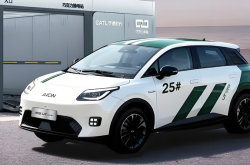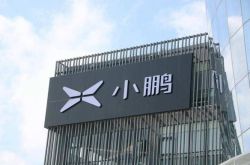Pragmatic Auto Companies and Vibrant Suppliers: Will the Automotive Industry Still Spark Imagination in 2025?
![]() 01/17 2025
01/17 2025
![]() 441
441
Text/Du Xiaoxun
Editor/Ziye
On January 10, local time, the 2025 CES (Consumer Electronics Show) concluded, yet conversations surrounding the automotive industry lingered.
During the exhibition, companies adeptly harnessed CES's futuristic nature, each showcasing unique strengths in displaying emerging technologies.
Examples include XPeng Motors' modular flying car, the "Land Aircraft Carrier"; BMW's next-generation intelligent cockpit, iDrive; Great Wall Motors' spatial language intelligent agent, ASL; and Zeekr's collaborative future intelligent driving and cockpit technology with NVIDIA and Qualcomm.
However, a notable observation is that, compared to previous CES events, this year's exhibition did not prominently feature auto brands.
Historically, as the mainstay of intelligent driving, the automotive industry's advancements in intelligence and automation fueled consumer imagination. Thus, at CES—a stage representing the "wind vane" of consumer electronics—the automotive sector often stood out, with companies unveiling cutting-edge technologies and futuristic concept cars.
For instance, at CES 2023, Sony and Honda jointly displayed the concept car AFEELA; BMW revealed the BMW i Vision Dee, a digital emotional interaction concept car; and Volkswagen Group launched the ID.7 digital camouflage version.
In 2024, Mercedes-Benz showcased its new MBUX virtual assistant; Hyundai Motor presented concept cars centered around "hydrogen-powered vehicles" and "software-driven transformation"; and Kia unveiled three PBV concept models, among others.
Yet this year, overseas auto companies seemed somewhat underwhelming, with some brands refraining from introducing concept cars, and many new products and technologies exhibited by auto companies lacking sufficient innovation and appeal.
Meanwhile, the absence of a large number of Chinese auto companies diminished the "presence" of the automotive sector. Most exhibited products, while grounded in reality, failed to provide high imagination in terms of technologies like autonomous parking and intelligent driving.
Conversely, the supplier sector was vibrant.
NVIDIA and Intel, two world-class chip giants, competed on the same stage; multiple LiDAR manufacturers participated, with China's RoboSense and Hesai Technology both launching "thousand-line" LiDAR and expanding product layouts into the robotics field at this CES.
Perhaps the rapid iteration of chip and sensor technology determines the upper limit of auto companies' intelligence, and a new wave of technological innovation by auto companies is closely tied to suppliers' capabilities.
1. Auto Companies at CES 2025: Less Hype, More Pragmatism
Compared to previous CES events, overseas auto companies lacked imagination in showcasing cutting-edge fields such as autonomous driving and intelligent cockpits this year.
For example, at last year's CES, BMW anticipated this year's trend—AR glasses—demonstrating the application of XREAL Air 2 AR in driving scenarios and collaboratively developing an automated valet parking solution with Valeo.
This year, BMW unveiled its first-ever panoramic iDrive, mainly showcasing the panoramic vision bridge function. iDrive encompasses four technologies: in-car horizon panoramic display, 3D head-up display, ultra-sensory intelligent steering wheel, and driver-centric central control, providing owners with a more intelligent human-machine interaction experience.
Panoramic iDrive will be gradually implemented. According to BMW enthusiast club BMWsky, all BMW models will transition to this design and infotainment system. However, this design is visually appealing but technologically unremarkable.
Honda, which took the stage with a "game controller" at last year's CES, was also more conservative this year.
At CES 2024, Honda and Sony jointly unveiled the pure electric vehicle AFEELA 1, featuring hidden door handles and a half-steering wheel resembling a game controller. At that time, it was reported that the model would be equipped with Qualcomm chips, offer Level 3 autonomous driving capabilities, and potentially connect to PS5, becoming a mobile gaming space for gamers.
This year, however, it was still the AFEELA 1, except that the official announced the price range. The innovative in-car configurations were similar to last year's concept, equipped with 40 sensors including one LiDAR and 800 TOPS of computing power, integrating a PS5 console, karaoke system, and anime content.
Overall, the model's functions were somewhat ordinary, especially its high-level intelligent driving system, as such capabilities have nearly become a standard feature in domestic models.
Moreover, the concept of an e-sports motorcycle experience is not novel, and models with robust computing power, such as Wenjie's new M5 and Lynk & Co Z10, can both "support in-car gaming" and "run Black Myth: Wukong".
Additionally, Hyundai Motor, which showcased its vision for future mobility centered around hydrogen-powered vehicles and software-driven transformation at CES 2024, and its Kia brand, which launched three consecutive concept models, did not participate in this year's exhibition.
Mercedes-Benz, which exhibited its new MBUX virtual assistant last year, also lacked highlights in its self-developed MB.OS operating system this year. According to introductions, the system supports more efficient voice interaction, rich in-car entertainment content, and advanced driver assistance functions.
Compared to overseas brands, participating domestic models performed decently.
One of the more comprehensive players was Zeekr, which showcased fast-charging batteries in terms of products and more advanced intelligent driving and automated driverless products in terms of systems at this year's CES.
In AI intelligent driving, Zeekr announced that it will equip its future models with NVIDIA DRIVE AGX Thor intelligent driving chips, boasting exceptional visual perception capabilities and support for various complex models, such as end-to-end large models and multimodal large language models.
Collaborating with Qualcomm for a future-oriented AI intelligent cockpit, in addition to intelligent navigation and voice interaction, it will also feature retina control functions, bringing imagination to the future cockpit.
Furthermore, Zeekr announced a collaboration with autonomous driving company Waymo to launch its first mass-produced natively autonomous vehicle, Zeekr RT, expected to begin mass deliveries in 2025.
From the above, it is evident that Zeekr has forged collaborations with multiple renowned foreign enterprises, signaling its accelerated overseas expansion in 2025.
Zeekr Intelligence Technology CEO An Conghui also revealed at the communication meeting that Zeekr will be the first natively Chinese auto brand to enter the US market.
Another auto company, Great Wall Motors, also focused its exhibition on AI technology, proposing a new concept for AI development: the Agent of Space & Language (ASL), a large model of spatial language intelligent agents.
Great Wall Motors introduced that at the ASL stage, vehicles can achieve comprehensive and three-dimensional information processing and intelligent decision-making, such as customizing personalized experiences for owners based on destination characteristics, passenger needs and preferences, as well as traffic and environmental information along the route.
Apart from AI technology, Great Wall Motors also launched the intelligent four-wheel-drive electric hybrid technology system Hi4, covering four series in passenger vehicles: Hi4, Hi4 Performance Edition, Hi4-Z, and Hi4-T, with over ten models equipped.
The different focuses between domestic and overseas auto companies at CES China may also be related to changes in the domestic and foreign automotive market environments over the past year.
In the past year, domestic consumers have become accustomed to various innovative ideas from auto companies. For example, Lixiang One has achieved end-to-end full-scale push; Huawei's intelligent driving system has been upgraded to ADS3.0; and XPeng's models priced between 100,000 and 150,000 yuan can all achieve automatic parking.
Simultaneously, the absence of many domestic auto companies made this CES less "internally competitive".
Perhaps the "unimpressive" performance at CES does not indicate that auto companies are "slacking off" but rather that no one anticipated the rapid iteration of intelligent driving technology to reach the "future" level within just one year.
2. Regarding "Future Mobility", Auto Companies Still Have Imagination
Certainly, there were still some "divergent thinking" players at this year's CES who brought highlights related to future technology.
At this year's CES, XPeng Motors' flying car sub-brand XPeng HTAE showcased the modular flying car "Land Aircraft Carrier", imbued with technology and a futuristic feel.
It is understood that XPeng Motors' "Land Aircraft Carrier" comprises a car and an aircraft. A six-rotor aircraft is hidden in the car, enabling the car in automatic mode to achieve one-button takeoff, automatic route planning, and automatic flight when needed to take off.
Although there were not many flying car product displays at this year's CES, XPeng was not the only player deploying the low-altitude economy. In recent years, the low-altitude economy has gradually garnered market attention.
In 2018, Roland Berger Management Consulting released a research report titled "Urban Air Mobility - The Rise of a New Mode of Transportation", predicting that flying cars will be put into use from 2025 onwards, followed by exponential growth.
In 2021, the Chinese government wrote the concept of "low-altitude economy" into the national plan for the first time in the "Outline of the National Integrated Three-Dimensional Transportation Network Planning", designating legal low-altitude airspace, providing broad space for the development of flying cars.
Policy support also means that "rapid progress" will soon become a reality.
In 2024, many auto companies also showcased their flying car products. For example, during CES 2024, Hyundai Motor's urban air mobility company Supernal displayed the electric air taxi S-A2; XPeng Motors also exhibited flying car products at CES 2024.
In June last year, Geely's Volocity Aerospace successfully debuted its tilt-rotor "flying car"; and at last year's Beijing Auto Show, Chery also showcased the first land-air amphibious flying car model based on the S'2ma Mars architecture.
Speaking of XPeng's "Land Aircraft Carrier", it is not only one of the few "future technology" displays at this CES but has also received over 3,000 advance reservations and plans to begin mass deliveries in 2026, indicating customer recognition of its technological performance.
Besides making "ground-running" vehicles capable of "flying in the sky", there are also auto companies aiming for outer space mobility.
Toyota, returning to CES after a five-year absence, did not release any automobile-related content. Instead, it announced the completion of the first phase of construction of the Woven City project, which will fully begin occupancy and empirical testing after autumn 2025. This large "living laboratory" is used to explore future mobility projects.
Additionally, Toyota President Akio Toyoda revealed that Toyota is exploring the development and production of orbital rockets. Through its subsidiary Woven By Toyota, it invested approximately 7 billion yen (about RMB 320 million) in the Japanese private space company Interstellar Technologies (IST).
It is evident that, like Tesla, Toyota believes that future modes of transportation are not limited to the ground or even Earth but can extend into space.
Apart from whimsical ideas about the "environment" in which vehicles travel, there are also auto companies making futuristic designs on vehicle models.
Honda showcased an electric sports utility vehicle (SUV) and a low-slung wedge-shaped sports car at this year's CES.
Of course, apart from unique shapes, futuristic products must be supported by autonomous driving technology. Both models have the ability to drive "without looking", allowing the driver to engage in other activities while driving, such as watching movies or participating in video conference calls.
The domestic auto company Zeekr also launched its autonomous vehicle, Zeekr RT, which can achieve autonomous driving. For instance, the product lacks a steering wheel or driver's seat, featuring only one screen on the center console, a more streamlined design that maximizes the "autonomous" attributes of autonomous vehicles.
It is understood that Zeekr RT will begin mass deliveries in 2025.
Beyond automobiles, Great Wall Motors has also added intelligent attributes to motorcycles.
At CES, Great Wall Motors' motorcycle brand Soul exhibited the Soul S2000. It not only refreshed the technological height of the motorcycle industry in terms of power but also demonstrated strong innovation capabilities in the intelligence field.
The product is equipped with an 8155 intelligent host and a software and hardware integrated solution, enabling functions such as intelligent cockpit, intelligent instrument, and intelligent electronic control.
It is reported that the sales of Soul S2000 have been robust, with the first batch of 288 orders quickly sold out since its launch in October 2024.
Overall, the automotive industry's vision for future technology remains remarkably vibrant.
3. Suppliers Shine as the Liveliest "Attraction"
Auto companies had a slightly subdued presence at CES, but their "allies" – suppliers – stole the show.
Among them, the most notable was global chip giant NVIDIA, which is not only a powerhouse in gaming, delegated AI, and NVIDIA Cosmos but is also making rapid strides in automotive technology development.
NVIDIA DRIVE Hyperion Platform, Image Source: NVIDIA Official WeChat Public Account
At CES, NVIDIA unveiled the new generation of automotive processor intelligent driving chip, "Thor".
In his keynote, NVIDIA CEO Jen-Hsun Huang hailed this processor as a revolutionary robotic computer boasting 20 times the computing power of its predecessor. The product is currently in full production.
"We leverage Omniverse's capabilities to test driving scenarios and generate synthetic data to support AI model development. I'm proud to announce that our Drive OS is the first certified programmable AI computer functional safety software to meet the highest automotive safety standard, ASIL-D," said Huang.
Furthermore, NVIDIA plans to integrate Drive OS and Drive Thor into the Aurora Drive autonomous driving system, aiming to mass-produce SAE Level 4 autonomous driving systems by 2027.
Huang also revealed NVIDIA's automotive partners, encompassing domestic companies like BYD, Lixiang, Xiaomi, and Zeekr, as well as international giants such as Tesla, Mercedes-Benz, and Toyota.
Another chipmaker, Intel, wasn't far behind, unveiling two automotive-related chips at CES 2025.
The first is the Adaptive Control Unit ACU U310, suited for electric vehicle (EV) powertrain systems and zone controller applications. It supports the integration of multiple real-time, safety-critical, and cybersecurity functions, applications, and domains into a single chip, making it ideal for chassis control systems, data fusion, air compressors, thermal management systems, and other control systems.
The second is an in-vehicle discrete graphics card. Following the launch of the first-generation AI-enhanced software-defined in-vehicle SoC, Intel aims to mass-produce the second-generation Intel Arc™ B-series in-vehicle discrete graphics card by the end of 2025.
This solution offers high-performance computing to support advanced in-vehicle AI workloads, alongside a next-generation human-machine interface (HMI), a more immersive in-vehicle experience, and a 3A-level PC gaming experience.
Besides NVIDIA and Intel, numerous domestic LiDAR companies were also in the spotlight at CES.
Among them, two leading enterprises, RoboSense and Hesai Technology, are locked in a fierce competition regarding the number of lines, both coincidentally proposing "thousand-line" LiDAR products.
RoboSense launched the EM4, utilizing SPAD-SoC chips and 940nm VCSEL. It is officially claimed to be the world's first 1080-line LiDAR. Hesai, on the other hand, showcased the AT1440, the world's LiDAR with the highest number of lines at CES, boasting up to 1440 lines.
The increase in the number of lines has led to a qualitative leap in various other parameters of both products.
Taking Hesai Technology's 512-line product AT512 as a reference, it features a global uniform angular resolution of 0.05°x 0.05°, a detection distance of 300m at 10% reflectivity, a maximum distance of 400m, and a point frequency of 12.288 million points/second.
RoboSense's EM4 boasts a maximum angular resolution of 0.05°×0.025° and an ultra-long ranging capability of up to 300 meters at 10% reflectivity, with a maximum of 600 meters. Its single-echo point frequency reaches an impressive 25.92 million points/second, providing vehicles with 1080P high-definition 3D perception capabilities.
Screenshot of RoboSense EM4 promotional video, image source: RoboSense official video account
While Hesai Technology has yet to disclose detailed information about the AT1440, based on current data, the product's parameter performance has also attained unprecedented levels. Its angular resolution has been refined to 0.02°, and the output point cloud achieves image-level quality, representing over a 30-fold improvement over current mainstream 1.5 million-point frequency automotive LiDAR.
Another domestic LiDAR company, Innovusion, also presented several high-performance LiDAR combinations, including the Falcon K – an image-level ultra-long-range main vision LiDAR, the Robin W – a high-performance wide-angle LiDAR, the SIMPL intelligent traffic management platform, and the new long-range LiDAR Robin E1X.
The heightened activity of automotive suppliers at CES 2025 might be attributed to the fact that their technological offerings extend beyond intelligent driving solutions for automakers.
For instance, RoboSense showcased a humanoid robot equipped with the world's first thousand-line ultra-long-range digital LiDAR, integrating sensor technologies such as vision, touch, and joints. During CES, RoboSense also forged a strategic partnership with Coco Robotics, the world's largest urban robot delivery platform.
Hesai Technology has launched a series of JT mini ultra-hemispherical 3D LiDAR products tailored for the robotics sector. Alongside the new product launch, Hesai jointly exhibited the MOVA 1000 lawn mowing robot with MOVA, equipped with a JT16 LiDAR and boasting high-precision 3D environmental perception capabilities.
As the "powerhouse" behind intelligent products across multiple industries, LiDAR and chip companies are undergoing rapid technological iterations and will collaborate with automakers to deliver an enhanced driving experience. 2025 is poised to be a year of intense competition among automakers. In this battle for survival, both automakers and suppliers will pull out all the stops.





